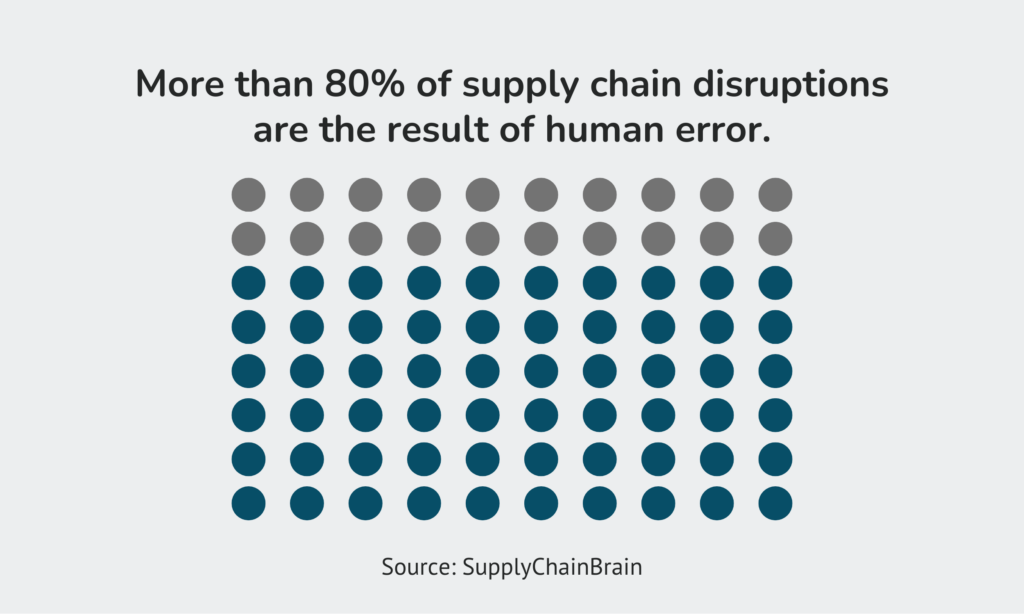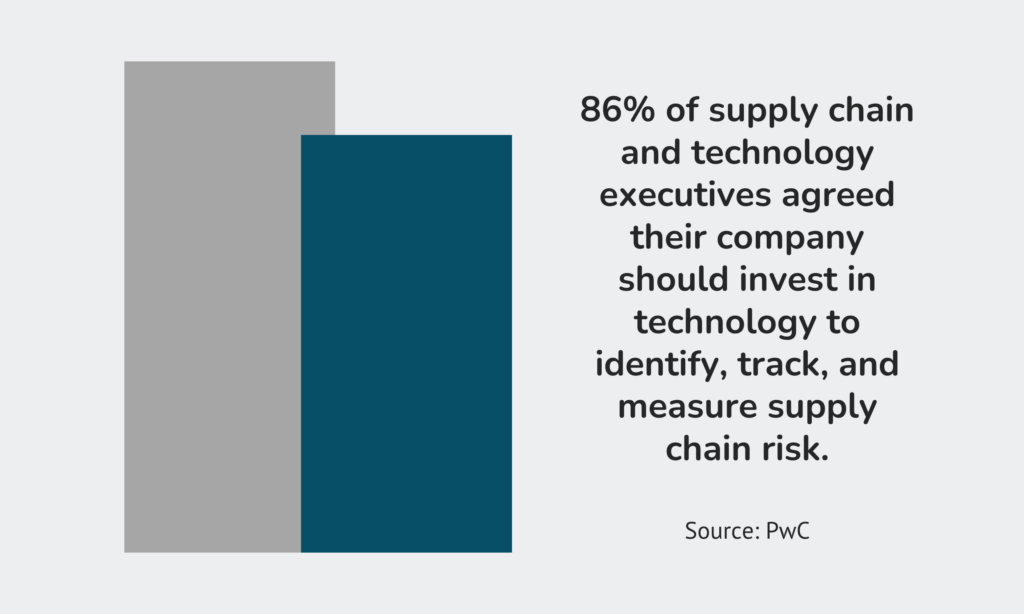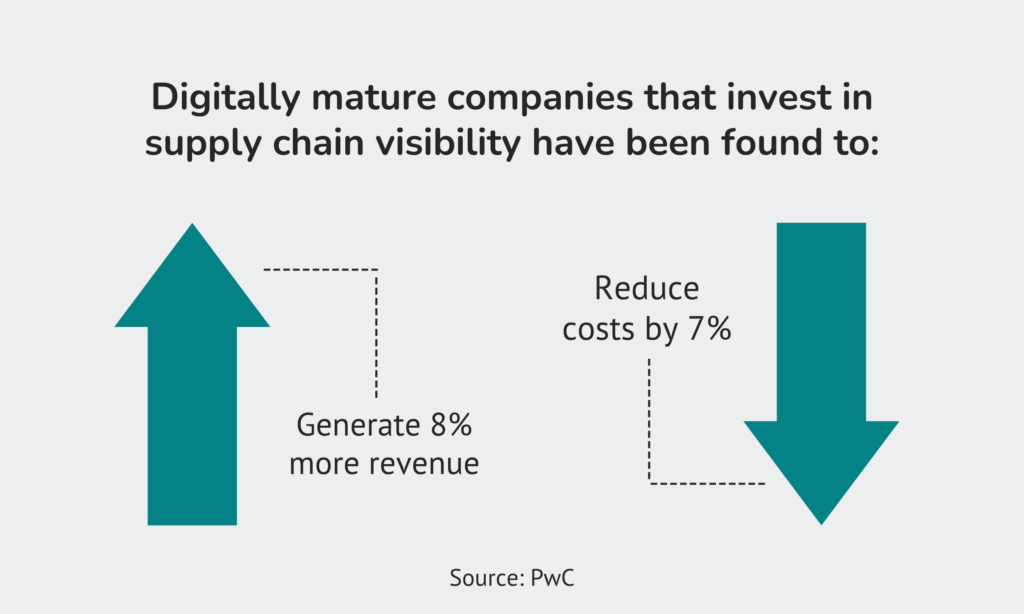Blog Posts
Implementation in Action: Q&A with Peter Zovath
5 minute read
5 minute read
As companies invest more in supply chain technology, the potential for a revenue boost also increases.
In a recent EY study, 93% of companies indicated they planned to increase investments in data and analytics to drive value.
Many companies are following through with those plans. According to a new global supply chain executive report, 66% of supply chain businesses and technology executives made proactive investments in supply chain technology in 2022, up from 40% in 2021.
These investments are paying off. In the same survey, half of respondents said their business gained over $1 million in additional revenue in 2022 due to supply chain technology investments, and 18% said their revenue increased by $3 million or more.
Supply chain analytics are one technology investment helping companies boost their revenue. A Gartner for Supply Chain Leaders survey revealed advanced analytics ranked among the top two emerging technology investments, with only 9% of organizations reporting no plans to invest.
Keep reading to learn how supply chain analytics support increased revenue through automation, risk mitigation, and improved visibility.
When we think of supply chain disruptions, big newsworthy events like the pandemic and world conflict immediately come to mind. Though these events certainly have—and continue to—cause disruptions, most supply chain problems are caused by humans.
That’s right: more than 80% of supply chain disruptions are the result of human error. Additional research shows the average employee makes 118 mistakes per year, and bad data alone costs the U.S. $3.1 trillion per year.
Supply chains generate massive amounts of data, and it’s often disorganized and chaotic. Without automated technology like supply chain analytics software, data aggregation and analysis are time- and labor-intensive. Combine that with the sheer amount of siloed data throughout the supply chain, and mistakes are unavoidable.
Not to mention, supply chains are more reliant than ever on real-time data. Humans simply can’t produce results as quickly and efficiently as today’s digital technology.
Automated supply chain analytics technology reduces manual data manipulation and predictive and prescriptive analytics can suggest appropriate actions based on historical and real-time data. Companies experience benefits like greater accuracy, decreased response time, savings on labor costs, and error prevention, all of which contribute to higher revenue and lower expenses.
However, implementing supply chain analytics is not as simple as installing a new system and moving on. Patience and careful planning are key: it takes the average company four months to implement a new supply chain software and up to 14 months to achieve ROI. Companies also should consider bringing on an implementation partner to ensure successful user adoption.
Read: 4 Common Barriers to Change Adoption

Supply chain analytic technology is key to mitigating risk and disruption, which helps minimize revenue loss.
In a recent supply chain survey, 74% of executives reported their business was disrupted for more than a week due to partner issues in 2022. Further research into supply chain disruptions found that major disruptive events incurred substantial financial costs, averaging 6-10% of annual revenues.
Additionally, McKinsey found that, on average, companies experience a disruption of one to two months in duration every 3.7 years. In the CPG sector, the financial impact of these disruptions over a decade can equal 30% of one year’s EBITDA.
Disruptions cause revenues to take a hit in various ways, including:
Supply chain analytics systems help organizations avoid losses associated with disruptive events. When disruptions happen, supply chain analytics software can:
1. Monitor the unfolding disruptive event in real time
2. Create a visualization showing leaders the impact of disruption on business
3. Suggest immediate actions to take to triage disruption
4. Use simulations to predict future scenarios
5. Suggest future actions based on scenario modeling
The advantages of supply chain analytics in mitigating business disruption are being recognized by more leaders. In fact, 86% of executives surveyed in PwC’s annual supply chain technology study agreed their company should invest in technology to identify, track, and measure supply chain risk.
Read: Supply Chain Trends & Insights Report: Transformation

Supply chain analytics systems also enable organizations to achieve end-to-end visibility across their entire network. Greater visibility leads to increased revenue and efficiency, leading more organizations to up their investments in analytic technology.
In a 2022 survey of 1,500 global supply chain leaders, 77% planned to implement technology in the next 12 months to gain visibility into their supply chain. Different research found 85% of business executives plan on investing at least $100,000 in supply chain technologies in 2023.
Digitally mature companies that invest in supply chain visibility have been found to generate 8% additional revenue and reduce costs by 7%. In the retail industry, supply chain visibility has been found to have the biggest impact on retailers’ revenue.
Analytics systems support greater visibility in numerous ways across the supply chain, including:
Additionally, IBM research discovered bottom-line benefits of companies that invested in supply chain visibility included:
To learn more about how organizations are implementing technology for greater visibility, watch the Gartner and SupplyChainBrain webinar, Supply Chain Visibility and Data Management, sponsored by Catena Solutions.

It’s clear investing in supply chain analytics supports higher revenue, profits, and efficiency. However, analytic technology is only as strong as the data it’s analyzing.
Before realizing the advantages of supply chain analytics, organizations need to prioritize data management. Building analytics systems on bad data is only going to add to an organization’s problems and will cause revenue loss, not gain.
Consider this example on the importance of data usability. A study from the University of Texas-Austin found if the median Fortune 1000 business increased its data usability by just 10%, it would translate to an increase in $2 billion in total revenue every year. Further, increasing both the quality of data and the ability of employees to access it by just 10% can increase return on equity by 16%.
For more tips on cleaning up your organization’s data, read our Data Management and the Supply Chain blog and view our Insights & Analytics solutions.